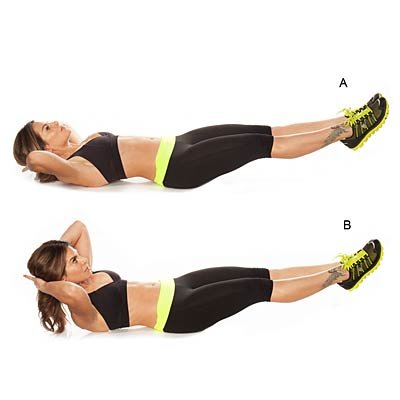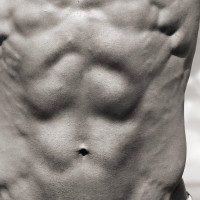Weight Loss Guide For Overweight Vegetarians - How to Lose Weight Fast the Healthy Vegetarian Way
Becoming vegetarian doesn't automatically guarantee weight loss.
If you phase out meat from your diet but replace it with other processed foods, it's as good as doing nothing. Overweight problems for vegetarians is often caused by wrong choice of foods, poor planning and inadequate exercise, more than overeating.
You need some guidance, so I'm sharing with you here 5 steps to losing weight fast and effectively.
Follow them and you're on the way to slim down, restore your health, look younger, more vibrant and amaze other overweight vegetarians who are still struggling to lead a truly healthy vegetarian lifestyle. But of course, you can then share this article with them.
For those non-vegetarians, vegetarian diet offers a better solution to weight loss since most plant-based foods are low in calories but high in fiber and other nutrients. It actually allows you to eat as much as you like and losing weight at the same time. These 5 steps show you how.
Step 1 - Find Your Target Weight
Find out how many pounds you need to lose against your height, using BMI calculation.
Assuming you stand 5-foot-7 (170 cm) tall and weigh 180 pounds (81.6 kg). Using BMI = Weight / (Height x Height), you score 28.2 kg/m².
Now, according to the BMI chart, 18.5 - 25 is the normal range for non-Asians and 18.5 - 23 for Asians.
Let's say you target BMI at 22, then you have to work out the formula backwards in this way => Weight = BMI x Height x Height, and get your target weight, which in this case is 140.5 pounds (or 63.6 kg).
You need to shed about 40 pounds (18.1 kg). Now, you have an idea of how many pounds to lose, next step please.
Step 2 - Monitor Your Body Fat
You need some essential body fats to protect your organs and keep you warm. So, you must constantly monitor your body fat content to make sure it doesn't fall too low.
You can go spend some money using hydrostatic (underwater) weighing or dual energy X-ray absorptiometry (DXA) scanning to find out your percent body fat, and mark that as a reference point to assess your fat loss progress.
Alternatively, check online for a reliable body fat calculator which costs you nothing. Although it may not give accurate results, at least you get something to work with in the initial weeks for tracking your progress, before you turn to DXA or hydrostatic weighing for body fat assessment in the later phase.
Step 3 - Toss All Unhealthy Veggie Foods Out the Window
Change what you eat to natural wholesome veggie meals comprising foods high in fiber and complex carbohydrates but free from trans-fat and animal fat. Not only will they help wipe out the toxins, but also enable your body to absorb essential nutrients for proper functioning of your fat burning engine.
Even when you eat out in some so-called healthy veggie restaurants or cafe, you can't guarantee the freshness or quality of ingredients used, preservation of nutrition during cooking and good hygiene of those food preparers. The nutritional value of what you pay for somehow gets compromised. You could end up even worse than before.
I suggest that you cook your own meals. Find some truly tasty recipes that you can easily make in 10 - 15 minutes, with minimal or no cooking.
Great recipes should also allow you to prepare them in advance at home to fit into your hectic 9 to 5 job, so that you get to absorb the essential nutrients even at your workplace, or traveling elsewhere.
Step 4 - Accelerate Your Fat Burning Engine
Eating quality nutrient-packed veggie meals alone can shed fats. But to deliver a more solid punch to boost up your overall health, you should work out.
Don't think of cardio as it only burns fat during your exercise bout. If you want to burn more, you must work out longer.
Rather, I recommend high-intensity workouts that burn more fats much more efficiently and effectively than slow cardio. You only need 30 - 45 minutes a day, 3 times a week, comparing to cardio that requires you to work out 1 - 2 hours a day, 6 - 7 days per week to get the same results.
High-intensity exercises will continue to burn fats even hours after your training bout. That's why more and more people are switching over.
But bear in mind, as high-intensity is riskier than low-intensity exercise in causing injuries, make sure you only learn it from true expert trainer.
Step 5 - Stop Losing Weight
Look in the mirror after every week. You should see your tummy flattening and your abs toned. Stand on your bathroom scale after every week. The reading should continue to drop towards your ultimate goal.
But take note. There are some people who always look upon themselves as fat, and obsessed with losing more weight even when they reached a healthy kilogram. They ended up transforming themselves from slim to anorexic. Or even died from it.
So, remember to stop losing weight once you've reached your target weight. Ask around for honest opinions about your shape. Don't coop yourself up in your own beliefs and judge yourself subjectively. Get objective feedback.
That will ensure you know when to stop and really lead a truly slim, healthy vegetarian lifestyle.
-
Knowing About Fast Healthy Weight Loss
When it comes to weight loss, most people tend to want instant results
-
5 Reasons Why You Cant Lose Weight
This is a question that many of you out there as
-
How to Lose 20 Pounds the Right Way
As many of us, you are probably someone that has tried many diverse
-
How To Get Rid Of An Obese Belly Fast?
Obesity or an obese belly is quite a common complaint among many peop
-
3 Must Dos To Lose Body Fat Fast
If I got a pound every time I get asked this question: What is the bes
-
A Look At Aging And The pH Miracle Diet
When many people hear the word diet they immediately think of weight l
- DON'T MISS
- Fat Burning Furnace - Rapid Weight Loss by Implementing This Single Strategy?
- How to Get Rid of Stubborn Body Fat Fast
- How to get the desired shape?
- Overweight, Want Help?
- Why Cardio is Essential for Weight Loss and How to Enjoy It
- 4 Fat Loss Tricks No One Tells You About
- Take in Far more Necessary protein for Weight Loss and Transforming Your Body Quick
- Is This What You might be Searching For On diabetic diets to lose weight?
- The Best Weight Loss Diet Plan
- Green Tea Benefits, Weight Loss Tea and Green Tea Diet




